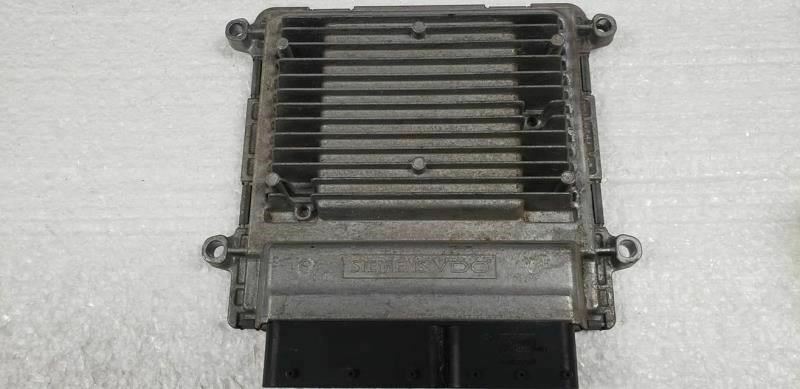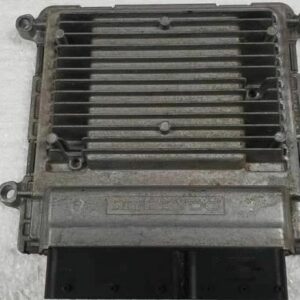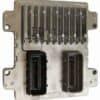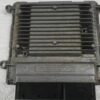Restore Peak Performance to Your Jeep or Dodge
Is your Jeep Compass, Patriot, or Dodge Caliber suffering from frustrating and unpredictable issues like stalling, rough idling, a no-start condition, or an illuminated Check Engine Light? These are classic signs of a failing Engine Control Module (ECM), the brain of your vehicle’s powertrain. In my 20+ years of diagnosing these vehicles, I’ve seen how a faulty ECM can cause a cascade of problems that are often misdiagnosed, leading to wasted time and money on unnecessary parts. This replacement engine computer, part number 04692101AF, is the definitive solution to get your vehicle running reliably again.
What sets this module apart is our commitment to a hassle-free installation. Forget about expensive dealership visits for programming or the need for specialized scan tools. We handle the critical software setup for you. Before this unit ships, it is professionally flashed with your vehicle’s specific Vehicle Identification Number (VIN) and current mileage. This ensures it communicates perfectly with your vehicle’s other modules, like the transmission controller and anti-lock brake system, right out of the box. It’s a true plug-and-play solution designed for both professional technicians and DIY enthusiasts.
From the Diagnostic Bay: The Intermittent Stall Case
A customer brought in their 2008 Jeep Compass with a problem that was driving them crazy: it would stall intermittently at stoplights, but not every time. There were no consistent trouble codes, just a generic U0100 (Lost Communication with ECM/PCM) that would pop up occasionally. We checked the fuel pump, sensors, and wiring harnesses, but everything tested fine. This is a classic symptom I’ve seen dozens of times. The internal processors of the original ECM were beginning to fail under thermal stress. After it warmed up, a connection would break internally, causing the stall. Once it cooled, it would work again. Installing a pre-programmed 2007-2010 Compass Engine Computer like this one solved the issue immediately. The customer was back on the road the same day, without the guesswork.
Is Your Jeep or Dodge Showing These ECM Failure Signs?
A failing engine computer can manifest in various ways. If you’re experiencing any of the following, a faulty ECM is a likely culprit. Pay close attention to diagnostic trouble codes (DTCs), as they are a key indicator.
- ✔ Unexplained stalling or engine cutting out while driving.
- ✔ Complete no-start condition where the engine cranks but won’t fire up.
- ✔ Persistent Check Engine Light with codes like P0601, P0606, or communication errors (U-codes).
- ✔ Noticeable decrease in fuel economy.
- ✔ Harsh or erratic automatic transmission shifting.
- ✔ Misfires or a rough, unstable idle.
- ✔ Seeming failure of multiple sensors at once.
Your Straightforward ECM Installation Guide
Replacing your 2007-2010 Compass Engine Computer is a manageable job for a DIYer with basic tools. Following these steps ensures a smooth process.
- Safety First: Always disconnect the negative terminal from your vehicle’s battery and wait at least 10 minutes for any residual power to dissipate.
- Locate the ECM: On these models, the ECM is typically found in the engine bay, often mounted to the firewall or inner fender. It’s a silver metal box with three large electrical connectors.
- Disconnect the Connectors: Carefully release the locking tabs on the three main wiring harness connectors and pull them straight off the module. Inspect the pins for any corrosion or damage.
- Remove the Old Module: Unbolt the mounting hardware that secures the old ECM to the vehicle. There are usually a few 10mm bolts holding it in place.
- Install the New Module: Mount your new, pre-programmed ECM in the same location and secure it with the original hardware.
- Reconnect Everything: Firmly plug the three wiring harness connectors back into the new module until they click into place. Reconnect the negative battery terminal.
- Final Step: Turn the key to the ‘On’ position (without starting the engine) for 15 seconds to allow the systems to initialize. Your vehicle is now ready to start.
Verified Fitment for Your Vehicle
This module is a direct-fit replacement for a range of Chrysler, Dodge, and Jeep vehicles. It is compatible with a wide array of original part numbers, ensuring you get the correct component. Please verify your vehicle is on the list below.
PATRIOT: 2007-2010 Electronic Control Module
CALIBER: 2007-2008 Electronic Control Module
CALIBER: 2009 (1.8L, 2.0L Gasoline, 2.4L with engine opt ED3) Electronic Control Module
CALIBER: 2010 (2.0L, 2.4L) Electronic Control Module
Compatible Part Numbers: 05150471AA, 05150523AA, 68043260AA, 68043260AB, 04692101AD, 04692101AE, 04692101AF, 68043260AC, 68043260AD, 68043261AC, 68043261AA, 68043261AB, 68070011AA, 68071022AA, 05033359AJ, 05187817AF, 68000107AF, 68026147AA, 68026147AC, 68028201AA, 68028201AC, 68028205AB, 68044228AA
Do I need to do any programming myself?
Do I need to do any programming myself?
No. This engine computer arrives fully programmed to your vehicle’s VIN and mileage. It is a plug-and-play installation, requiring no further action from you or a dealership.
Where do I provide my VIN?
You can provide your vehicle’s VIN during the checkout process. There will be a designated field for you to enter this information to ensure correct programming.
Will this fix my Check Engine Light?
If the Check Engine Light is on due to an internal failure of the original ECM (like codes P0601 or P0606), then yes, this part will resolve the issue. However, if the light is on for another reason (e.g., a bad oxygen sensor), that separate issue will still need to be addressed.
Is this compatible with my 2009 Dodge Caliber 2.4L?
Yes, it is compatible with the 2009 Dodge Caliber with the 2.4L engine, specifically with engine option code ED3. Please check our detailed fitment list to confirm your specific model and year.
What tools do I need for installation?
Installation typically requires only basic hand tools, such as a socket wrench set (often 8mm or 10mm sockets) to remove the battery terminal and the module’s mounting bolts. No special electronic tools are needed.



